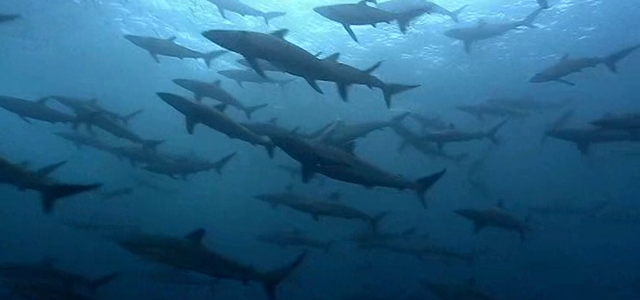New York Governor Kathy Hochul today announced new shark-monitoring drones will be deployed to local beach communities on Long Island and New York City, building on the State’s previous actions taken to address and enhance beachgoers’ safety at State beaches. Governor Hochul also announced that the New York State Office of Parks, Recreation and Historic Preservation and the Department of Environmental Conservation have increased surveillance over the waters in response to shark sightings over the Fourth of July holiday, following new shark safety protocols established this year.
“New York has some of the most beautiful beaches in the country, and I’ve directed State personnel to do everything possible to keep beachgoers safe this summer,” Governor Hochul said. “Ahead of the busy summer season, we developed new tools and strategies to monitor marine wildlife and protect the health and safety of New Yorkers. These new drones will increase the shark monitoring capacity of local governments across Long Island and New York City, ensuring local beaches are safe for all beachgoers.”
The new drones will be distributed to all downstate municipalities by the New York State Office of Parks, Recreation and Historic Preservation (State Parks). It also provides funding to cover the cost of training local personnel to operate the drones. As most of those municipalities do not have drone surveillance capability, this investment will assist localities and agencies along the entire Long Island coastline and in New York City enhance their shark monitoring efforts.
State Parks held a pre-season meeting this spring with beachfront municipalities and local agencies to provide the latest information on shark activity in New York State and discuss coordinated beachfront notifications. In addition, the Department of Environmental Conservation (DEC) last week released its Guidance to Reduce the Risk of Negative Interactions with Sharks.
When situations arise of shark sightings and/or interactions with swimmers occur in State Parks beaches, swimming is suspended and all bathers are cleared from the water. Swimming is allowed to resume at least one hour after the last sighting. State Park lifeguards, Park Police and park staff continuously scan and patrol the waters for shark activity.
In addition, the Long Island Coastal Awareness Group, which is comprised of more than 200 individuals from municipalities, agencies, and private beach operators stretching from Queens through Long Island, is notified so they may take appropriate action in their respective jurisdictions.
New York State Parks Commissioner Erik Kulleseid said, “State Park lifeguards, Park Police and park staff are on high alert at our Long Island beaches to keep visitors safe. We will continue using all of the tools at our disposal to be on the lookout for sharks and other dangerous marine life.”
New York State Department of Environmental Conservation Commissioner Basil Seggos said, “New York’s shores are home to a wild and natural marine ecosystem that supports the annual migration of sharks to our coastal waters. While human-shark interactions are rare, DEC encourages the public to follow shark safety guidance to help minimize the risk of negative interactions with sharks this summer.”
New York State Police Acting Superintendent Steven Nigrelli said, “In the event of a sighting or emergency such as the type of incidents that occurred over the 4th of July weekend, NYSP Aviation is ready to provide rapid response and support as needed. Like our State Parks and law enforcement partners, the safety of all New Yorkers is our first priority, and we stand ready to assist them to ensure that beachgoers remain safe.”
In late May, Governor Hochul announced enhanced shark monitoring measures for Long Island State Park beaches, which include State Parks’ expanded surveillance capabilities:
- An additional ten drones has more than doubled the eight in operation from last year. One new drone assigned to Park Police is a large enterprise model with thermal imaging, laser range finding, and high-quality cameras to allow for night-time surveillance and patrols in adverse weather conditions. This drone can also drop personal flotation devices in emergency situations
- Currently 21 staff including Park Police officers, State Park operational staff, lifeguards and certified drone operators are trained. An additional 12 staff members were trained to be ready for this summer.
- State Parks Environmental Educators holding public outreach regarding shark habitats for people at Jones Beach, Robert Moses and Sunken Meadow this summer
- Two new Yamaha WaveRunners have been assigned to lifeguards to patrol both Jones Beach and Robert Moses State Parks. These two personal watercrafts will join one already in operation at Sunken Meadow State Park
- Additional buffer zones were created between swimming areas and surf fishing areas
- When sightings occur, New York State Police Aviation will be available to respond as needed
To minimize the risk of shark interactions, the Department of Environmental Conservation advises the following shark safety guidance:
- Avoid areas with seals
- Avoid areas with schools of fish, splashing fish, or diving seabirds
- Avoid swimming at dusk, night and dawn
- Avoid murky water
- Swim, paddle, and surf in groups
- Stay close to shore, where your feet can touch the bottom
- Always follow the instructions of lifeguards and Parks’ staff
Humans assume risk whenever they enter any wild environment, whether on land or in the water. Although it is impossible to eliminate risk altogether, ocean users can modify their behavior to minimize potential interactions with sharks and reduce overall risk. When in the ocean, follow DEC’s shark safety guidelines to minimize the potential for negative interactions with sharks.



















